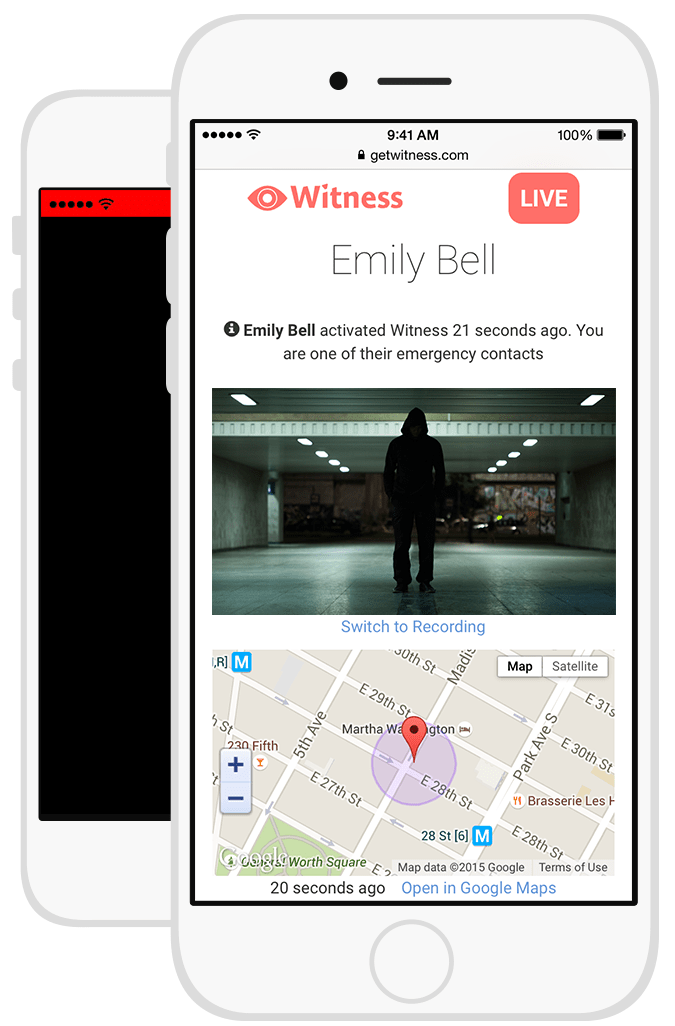
\
Witness, the live-streaming app that serves as a panic button for the mobile age, debuted earlier this year at the TechCrunch Disrupt NY 2015 Hackathon, where it eventually went on to win the grand prize. Now the app is live in the App Store for the public to try, allowing users to broadcast their location, audio and video to a pre-defined set of emergency contacts. You can think of Witness as something like a private version of Twitter’s Periscope, for example, combined with a user safety application designed to quickly alert friends or family if you’re in trouble or are in an uncomfortable or potentially dangerous situation where you may need help.
Created by developer Marinos Bernitsas, who quit his job in algorithmic trading in New York to focus on his passion for building mobile apps, Witness was originally designed for those who are in high-risk situations – like when you’re walking home alone at night through unknown or unsafe areas.
But the app also resonated with the Hackathon audience and judges because of its potential to document and record police brutality or other cases where civil disobedience was met with undue force – especially as the app had emerged at time when a number of high-profile incidents of clashes with police had brought attention to these issues.
Read More
Comments
Post a Comment